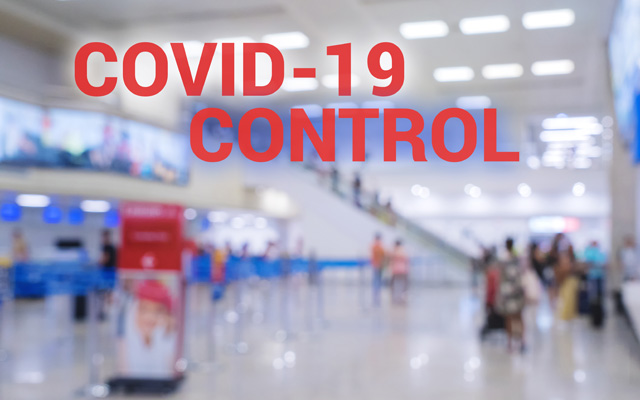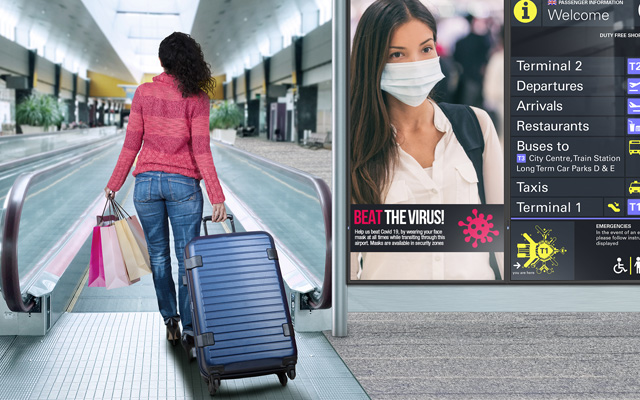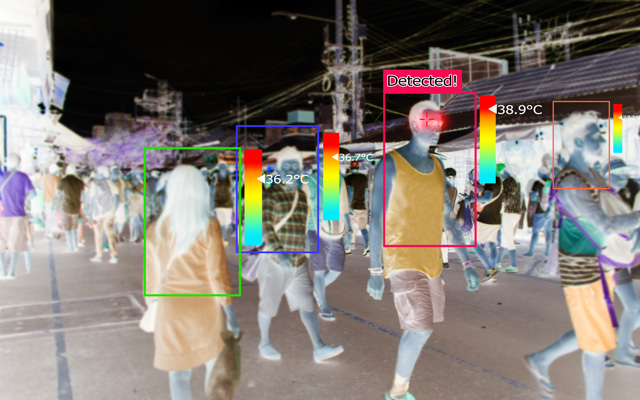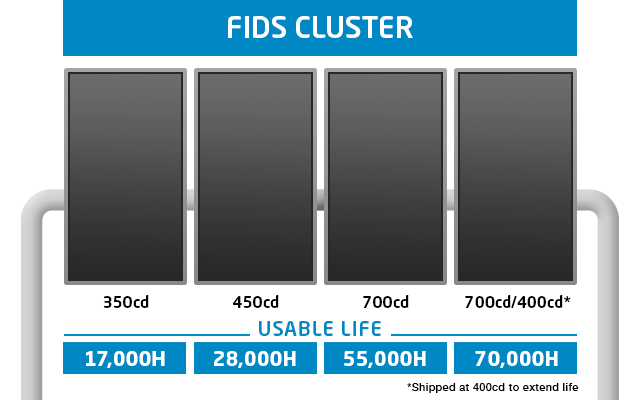Learning to fly again: supporting aviation in its recovery
As Europe feels its way out of quarantine, NEC’s Filip Cogghe sees digital signage as a vital enabler to increasing passenger confidence.
Aviation is a major contributor to the global economy; it supports trade, enables tourism and provides jobs. Since passenger numbers plunged to an unprecedented level due to Covid19, finding a way to get the world flying again has become an imperative for the survival of so many industries, to rescue employment and to reignite the economy.
Airlines across Europe have received massive financial support from respective governments to protect what is universally recognized as being of strategic national importance.

Filip Cogghe, Director of Transportation, EMEA – Aviation & Public Transport, NEC Display Solutions
A coordinated effort
Heathrow Airport has called on the UK government to lay out its plans for reopening borders (via Reuters). Meanwhile, analysis by Eurocontrol*, identifies the importance of a coordinated effort across all European regions, with a common approach to putting in place operational procedures and lifting national restrictions.
Governments and airports must work collaboratively towards scaling up operations as soon as possible to minimize disruption and support recovery.

Building confidence
Increased demand will only come about when passengers feel confident that they can travel without risk. The only way to achieve this is by putting into place all the necessary measures which will help to protect the safety of staff and passengers.
John Holland-Kaye, Heathrow chief executive, told MPs on the transport select committee that a common international standard for health screening in aviation was crucial to restoring confidence and encouraging people to return to flying.
Social distancing will remain a key defence against the spread of disease with implications for queue management. The wearing of face masks and potentially goggles will become mandatory, provided to passengers alongside plentiful hand sanitizer and gloves.

Disinfection tunnels and thermal scanning will become commonplace across all airports. Only through practicing thorough safeguarding procedures will passenger confidence return. It will take time but the sooner this is implemented the sooner the recovery process can begin.
Digital Signage
In order to keep passengers informed, airports will rely heavily on display technologies to ensure adherence to health and safety procedures. Digital signage and wayfinding will no longer be ‘nice-to-haves’, they will become ‘must-haves’ for airports. Printed assets are onerous and costly to update and deploy; as procedures change to keep up with the latest guidelines and increasing passenger numbers, only digital assets will support real-time accuracy of information.
The way we travel has changed significantly; these digital assets will be required across terminals as a permanent feature. They must be reliable and demonstrate long-life performance. Messages might include reminders about social distancing, instructions on how to wear face masks, updates regarding queue times or guidance upon approaching the thermal scanner.

NEC’s A Series LED poster is robust yet mobile. With a small footprint and light weight, it can be deployed across the terminal to provide instant information in a medium which cannot be ignored. The displays offer multiple-usage scenarios, deployed according to need and updated instantly.
Digital Imaging
Heathrow Airport announced that it is to trial technologies and processes which could form the basis of a Common International Standard for health screening at all global airports. One element includes facial recognition thermal screening technology to accurately track body temperature. Similar technology is already in place at many Asian airports. Visualising the thermal image will require high quality, reliable displays to present clear and accurate imaging data.
NEC’s desktop displays are well placed to provide robust, reliable performance, potentially operational 24/7, delivering superb colour reproduction and protecting the user with low blue light, flicker free technology and an anti-glare screen.

Reducing costs
Whilst an empty terminal building is far from desirable, it does present a surprising opportunity - this is an ideal time to implement technology refresh programmes. Under normal circumstances, it is estimated that the costs associated with each installation is 200 – 800 Euros. This includes a full day of administration effort and manpower, associated paperwork and securing the area away from the public.
Much of this effort is negated whilst the terminal building is so quiet, equating to an estimated cost reduction of 80%. Even as passenger numbers slowly being to increase, maintaining a secure area around the installation is far easier to implement, requires significantly less paperwork and is swift to complete.

Reliability is paramount
Airport operators understand the importance of quality. It is estimated that by investing 15% more in quality hardware you will benefit from a 50% lower Total Cost of Ownership over a 7 year period (see graphic). Display reliability is a major success factor in achieving a low operational cost and a low TCO overall. Smart purchasing decisions therefore should not be based on lowest initial cost but should always focus on the entire lifetime of a display, averaging between five to eight years.
To have a minimum viewing comfort on FIDS Displays in an Airport, you need a minimum of 300 cd/m2.

Buy cheap, buy twice!!
15% increase in CAPEX gives you consistent image quality over life and 50% reduction in TCO over 7 years.
Choosing a solution which is ‘fit for purpose’ and specified according to the requirements of the application and possible future usage is vital to ensure a reliable long-term asset. Robustness and longevity are vital elements and NEC’s quality engineering and innovative design features ensure reliable performance over an extended life-time.
This whitepaper explains the critical success factors to reliable display operation.
NEC Display Solutions works with 200+ airports, including Heathrow, and delivers technology that allows them to display real-time information both to passengers and to control room operators.
Visit our dedicated airport solutions website for further insight:
NECs Airport SolutionsBrowse our airport case studies:
Case Studies* Eurocontrol is a pan-European, civil-military organisation dedicated to supporting European aviation.
